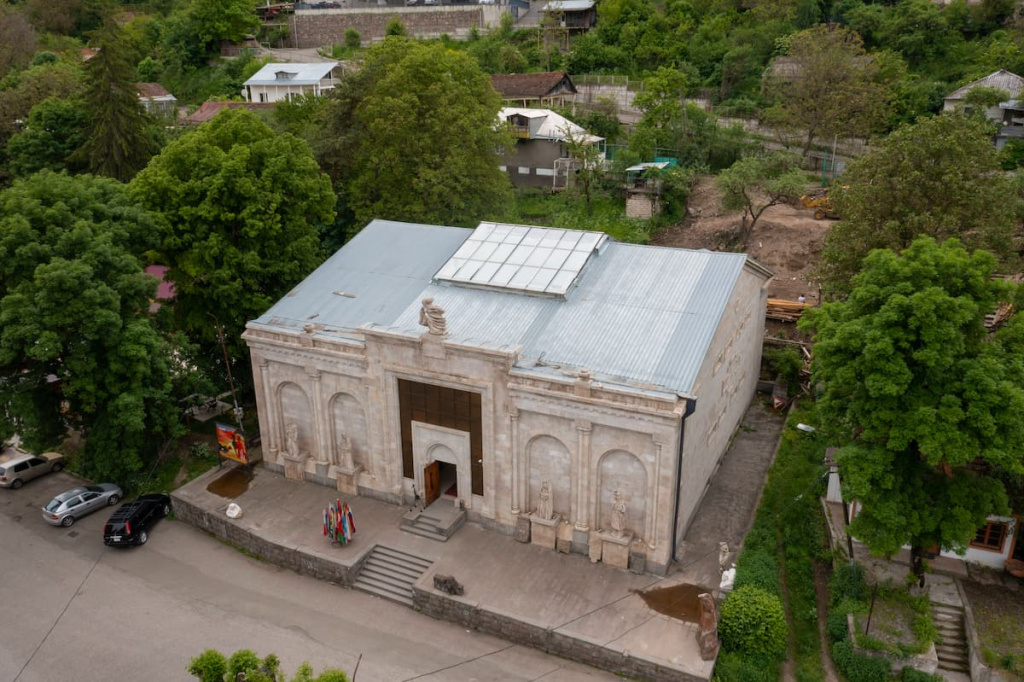Aivazovsky, Shishkin, and prehistoric artifacts under the same roof. With what else will the Museum of Local Lore surprise us? With Dilijan Art Gallery
In the middle of the XIX century for the first time in Armenia, archaeological excavations were carried out near Dilijan, during which ancient artifacts dating back to the 3rd millennium BC were discovered. The artifacts found, such as tools, dishes, jewelry, and much more, are stored in the Museum of Local Lore, in the Art Gallery of Dilijan.

This is just one of the reasons to visit the museum. With what else can it attract the visitors? Let's figure it out together.
To get a better understanding of the city
The Museum of Local Lore is an important part of the historical and cultural presentation of any city. And the museum in Dilijan is no exception. You only have to step over the threshold to realize that.
The museum is conceptually divided into two parts, which are the Local Lore museum and the Art Gallery.
The Local Lore museum is a time machine, thanks to which you can travel to the late Eneolithic era or the exquisite urban interiors of the XIX century intelligentsia. You can also check out the unusual ornaments on jewelry and ancient household items, as well as witness the uniqueness of the techniques of Armenian carpet weaving, pottery, and other crafts.
“It is impossible to understand Dilijan without this museum. After all, the museum represents everything that our city is. It is the local history part, which includes the regional history, the oldest artifacts found during excavations, and an Art Gallery. Two elements are represented under one roof. This is the concept we offer to visitors, and I think that this format is much more interesting for tourists,” emphasizes the director of the museum, painter Arman Badeyan. Arman Badeyan: “Living in Dilijan and not being creative is a crime”
The opening of the Dilijan Museum of Local Lore took place in 1950. However, long before that, the exposition of unique historical artifacts was kept in the building of the Dilijan library (the collection was assembled by the art historian Serik Davtyan). In 1957, thanks to the efforts of the artist Hovhannes Sharambeyan, the Art Gallery was opened.
After visiting the museum, Dilijan really opens up in a new light, as a city where ancient history, ancient traditions of handicrafts, fine arts, and the majesty of nature are intertwined. From that moment on every street, building, and souvenir from Dilijan takes on a whole different meaning.
Immerse yourself in beauty. The works of Aivazovsky, Saryan, Shishkin, Kent...
The Art Gallery features paintings not only by famous Armenian artists, but also by world-famous foreign ones, such as the American artist Rockwell Kent, the Russian painter Ivan Shishkin, the great marine painter Ivan Aivazovsky and his student Lev Lagorio, and even some works by Dutch, Italian and French artists of the XVI-XVIII centuries.
“Rockwell Kent traveled around the cities of the Soviet Union, and it would be a crime not to come to Dilijan. He also compared it to Switzerland. And the artist’s fascination with the area is evidenced by the fact that he donated several of his works to the art gallery,” Arman Badeyan says.
Armenian painting is represented in all its bright palette of colors. These are the canvases of the founding fathers of the Armenian school of painting G. Bashinjaghyan, V. Surenyants, P. Terlemezyan, M. Saryan, and paintings by the unique Minas Avetisyan. By the way, Minas Avetisyan's “Stillness”, according to the director of the museum, Arman Badeyan, has become the symbol of the art gallery. It’s the most favorite and photographed by tourists.
According to Arman Badeyan, the exhibition halls where Armenian social realism is represented also deserve special attention. It has its distinctive features and goes far beyond the generally accepted ideas about this direction of art.
“Today not in every museum you can find social realism. We have two halls in which the works of Armenian artists and sculptors of that period are exhibited, before and after the thaw. Here you can see the paintings by Mher Abeghyan, Ruben Adalyan, Levon Kojoyan, Arpenik Nalbandyan, and many other interesting works. This is a fairly large collection,” he emphasizes.
Learn the basics of traditional crafts
In the Museum of Local Lore, in the Art Gallery of Dilijan, master classes are held. Both local residents and guests of the city (adults and children) can participate in them.
The museum offers 5 master classes to visitors.
- Master class on carpet weaving. In 1-2 hours you will be able to knit a small ornament on a previously prepared wool-based fabric. Armenian carpet weaving is distinguished by the double knot technology, which is what is taught during this master class. The work is done with woolen threads and requires patience.
- Master class on making rugs. Carpets and rugs differ both in manufacturing technology and in appearance (for example, rugs don’t have knots on the reverse side). During the master class, it is asked to create a small ornament on a pre-prepared basis.
- Batik master class. Batik is a technique/fabric art. Participants are invited to paint a sketch on fabric (in Dilijan city subject) with special paints. The fabric is installed on a small wooden frame.
- Master class on jewelry-making. It’s a unique master class that invites you to try yourself as a jeweler and make unusual jewelry for yourself or as a gift for your loved ones. Copper is used as a material for the making of jewelry, the source of inspiration is the ancient jewelry in the archaeological hall of the museum.
- Master class on artistic graphics (linocut). During the master class, the technology of engraving on linoleum is used. The masters of the museum have already prepared for visitors the sketch drawings for engravings. All of them symbolize Dilijan.
Each master class is accompanied by a story about the development and intricacies of a particular craft in Dilijan. They will tell you about the features of Armenian carpet weaving, the history of which dates back centuries, varieties of national ornament, the process of dyeing woolen threads, batik technology, and linocut.
But most importantly, the participants of the master classes will be able to take a small part of Dilijan with them, which was made with their own hands.
Any other questions?
Our specialists will contact you as soon as possible




